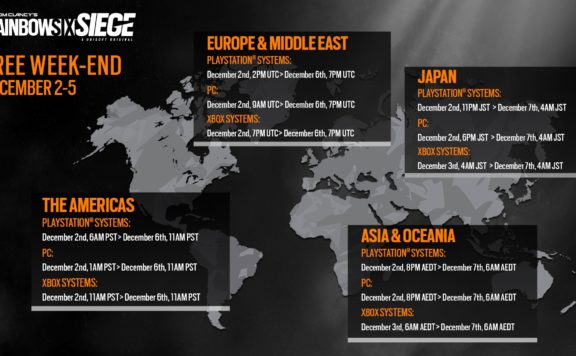The gaming industry has evolved dramatically over the past few decades, not only in terms of graphics, gameplay mechanics, and storylines but also in its business models. A study of these models provides insights into how companies monetize their creations and how consumers interact with them. This article delves deep into two of the most prominent economic models in the gaming realm: microtransactions and subscriptions.
Microtransactions: A Glimpse into the Alacarte Method
Microtransactions, commonly referred to as in-game purchases, are small payments players make within a game to acquire virtual goods or advantages. These can range from cosmetic items like skins and avatars to gameplay enhancements or additional content. Just as the gaming industry has diverse monetization strategies, so does the wider realm of entertainment and digital platforms.
For instance, in sports betting Massachusetts has seen emerging trends where users can engage in micro-wagers on specific events or outcomes within a game, further blurring the lines between traditional gambling and gaming microtransactions.
The Allure of Cosmetic Microtransactions:
Often, microtransactions are purely cosmetic, meaning they don’t confer any gameplay advantage. This is evident in titles like “Fortnite” or “League of Legends,” where players spend real-world money on skins, emotes, or character designs. This model is enticing for both developers and players:
Developers benefit from a steady stream of revenue without altering the game’s balance. Players enjoy the freedom to customize their in-game appearance, enhancing their personal gaming experience.
It’s interesting to note the psychology behind cosmetic microtransactions. Players, particularly in multiplayer scenarios, value individuality and the ability to stand out. A unique skin or avatar becomes a status symbol, a mark of commitment to the game, or simply a way to express one’s personality. This sentiment translates into real-world monetary value for developers and publishers, emphasizing the importance of cosmetic elements in games.
Pay-to-Win Controversies:
Not all microtransactions are cosmetic. Some can grant players advantages in gameplay, leading to what is often labeled as “pay-to-win” models. This can skew the balance of the game, allowing players who spend more money to gain significant advantages over those who don’t. Such practices often stir debates regarding fairness and the overall integrity of the game.
As backlash against pay-to-win mechanics grows, some developers have started adopting hybrid models. For instance, in-game purchases might allow for faster progression but not grant outright advantages in competitive scenarios. This ensures that while players can opt to speed up their journey, skill remains the predominant factor in gameplay success.
Subscriptions: Commitment in Exchange for Comprehensive Access
Subscription models have seen a resurgence in popularity, especially with the advent of cloud gaming and platforms like Xbox Game Pass or PlayStation Now. Instead of purchasing a single game, players pay a monthly fee to access a library of titles.
The Win-Win of Subscription Models:
Subscriptions can offer immense value to both game developers and players. From a developer’s perspective:
- Predictable Revenue Stream: Developers can forecast income based on subscription numbers, aiding in budgeting and future planning.
- Enhanced Engagement: By offering a multitude of games, there’s a higher chance of retaining players on the platform.
For the players:
- Cost-Effective: Players can access multiple games for a single monthly fee, often less than the cost of a new AAA title.
- Discoverability: It becomes easier for players to explore and discover new genres or titles they might not have considered purchasing individually.
The subscription model also fosters a symbiotic relationship between developers and platform providers. With platforms keen on expanding their libraries, indie developers or titles that may not have garnered significant attention in a crowded marketplace can find a broader audience. This has led to a renaissance of innovative and experimental gaming content, enriching the ecosystem.

The Challenge of Content Saturation:
While subscriptions are lucrative, there’s the challenge of content saturation. With a plethora of titles available, players might feel overwhelmed, leading to decision paralysis. Moreover, if not curated well, the quality of games in the library can vary, potentially diluting the value proposition of the subscription. To address this, many platforms invest in recommendation algorithms, much like streaming services such as Netflix or Spotify.
By analyzing player behavior, preferences, and gaming history, these systems can curate a more personalized list of game recommendations. This not only enhances user experience but also ensures a continuous engagement loop, further solidifying the subscription model’s viability.
Comparative Analysis: Microtransactions vs. Subscriptions
To understand these models’ prominence and their implications for the future, it’s essential to draw a comparative analysis:
- Revenue Stability: Subscriptions offer a more predictable and consistent revenue stream compared to microtransactions, which can be sporadic and depend on player engagement with specific in-game content.
- Player Engagement: While microtransactions can lead to high engagement in a single game, subscription models drive engagement across multiple games on the platform.
- Flexibility: Microtransactions offer players the flexibility to choose specific in-game content they’re interested in, whereas subscriptions provide broad access without the granularity of choice for individual content.
Beyond the obvious financial implications, there’s an intricate web of player psychology at play. Microtransactions often leverage the ‘reciprocity principle’ – players, after investing time and emotion into a game, feel a heightened sense of commitment, making them more likely to spend.
Subscriptions, on the other hand, thrive on the ‘endowment effect’, where players value what they have continuous access to, thus renewing their subscriptions to maintain that access.
Conclusion
The economic landscape of gaming is diverse, shaped by player behavior, technological advancements, and business imperatives. While microtransactions and subscriptions are among the most prominent models today, the industry’s dynamic nature means that new paradigms might emerge in the future.
For developers, understanding these models’ intricacies is crucial to aligning monetization strategies with player desires and industry trends. For players, staying informed means navigating the gaming world with knowledge, ensuring a fair and enjoyable experience.
It is worth noting that as technology and player preferences evolve, so will monetization strategies. The intersection of virtual reality, augmented reality, and blockchain technologies might spawn entirely new economic models in gaming. By staying ahead of these trends and understanding their implications, both developers and players can navigate the future of gaming with foresight and adaptability.







